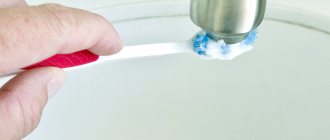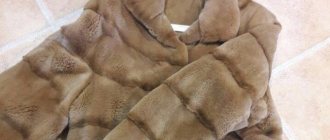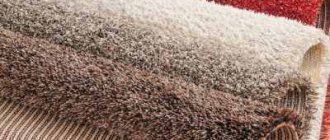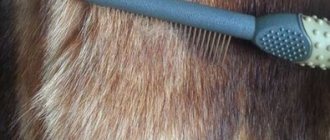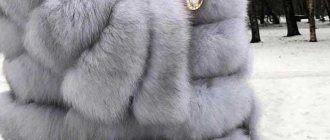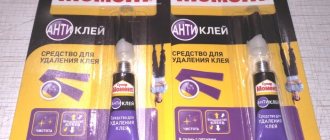A fur coat is not only an item of luxury and status for the owner, but also clothing necessary in the cold. Fur retains heat better than down jackets and helps not freeze even in the most severe frosts. However, caring for a fur coat involves some difficulties. This noble material cannot be washed and it is better not to get it wet. There are several ways to clean a fur coat at home without damaging the product.
Preparatory stage
Before you start cleaning the fur, determine its degree of contamination.
Blow on the villi:
- if they scatter easily, this means that the fur product is quite clean;
- sticky pile, lack of lightness - indicates that your fur coat needs cleaning.
When cleaning fur at home, remember that:
- Fur items cannot be washed. When wet, the skin becomes rough and cracks. This leads to lint loss.
- It is necessary to dry in a ventilated area. Avoid exposure to sunlight. Do not use electrical appliances or batteries.
- Never iron.
- Do not use aggressive household chemicals.
Before cleaning, the fur coat must be freed from dust and foreign odors. Ventilation will help get rid of unpleasant odors.
To remove dust:
- hang your fur coat on hangers;
- Moisten a cotton outerwear cover in a weak vinegar solution (for 5 liters of water - 50 ml of 9% vinegar). Squeeze well;
- Put the damp cover on the fur item. Zip up;
- Use a carpet beater to go over the fur coat from all sides;
- remove the cover and comb the fur with a soft brush.
Is it possible to wash a fur coat?
Washing natural fur coats is completely excluded. Wet material is extremely vulnerable and subject to deformation. Any friction and twisting will lead to hair loss and baldness of the product. However, washing a fur coat made from artificial materials is acceptable in many cases. This mainly applies to fashionable plush models.
It should be remembered that before washing a product made from artificial materials, you must carefully study the information on the label. Most outerwear should be washed on delicate cycles or by hand.
Types of home fur cleaning
Depending on the available means used and cleaning methods, there are:
- dry method;
- wet method;
- adding shine.
Dry brushing with bran
You can clean your fur coat at home using bran (wheat or rye bran is suitable for this purpose). Heat the cereal product in a frying pan or in the oven, sprinkle it on your fur coat.
Using your hands, rub into the lint with gentle movements. Shake the coat well. You can additionally clean it with a brush.
Dry cleaning with talcum powder
Cleaning with talcum powder, fine table salt, semolina or starch gives good results. Baby powder is often used instead of talcum powder.
Sprinkle any of the listed substances evenly onto the fur product and rub into the undercoat.
The movements during this cleaning are similar to washing. Sweep away the cleaning compound with a natural bristle brush.
We clean the pile with river sand
For this:
- heat the washed sand in a frying pan (it should be dry), cool slightly;
- pour on the product;
- rub it in and shake it off;
- repeat the cycle several times;
Cleaning fur with sawdust
For dry cleaning of fur items, use birch or linden sawdust soaked in gasoline (turpentine).
Sprinkle them on your fur coat and leave for an hour to an hour and a half. Shake out and comb.
Attention! Do not use sawdust from coniferous trees: they contain resinous substances.
Wet cleaning
To process products, you can use ready-made or improvised means:
Shampoo
Animal washing shampoo (preferably for long-haired cats), hair shampoo, wool washing gel.
Prepare an aqueous solution of one of the indicated preparations: for 1 liter of warm water - 1 tablespoon of detergent, stir well.
Soak a cotton napkin in the mixture and squeeze out. Using a damp cloth, using movements similar to washing, go over the entire surface of the fur.
Shake, comb with a brush with natural bristles, hang on hangers in a dry, ventilated area until dry.
Vinegar and alcohol
You can refresh the look and clean a vest or other fur clothing from dirt with the following composition:
50 ml of 6 - 9% acetic acid, 50 ml of medical alcohol and 50 ml of water (alcohol and water can be replaced with 100 ml of vodka). Moisten the flannel with the solution, wipe the pile. Brush, hang and let dry.
Using improvised means
- You can clean the fur with a napkin with a solution applied to it: salt (40 grams) + 5 ml of ammonia + 0.5 liters of water.
- Stains on fur items can be removed with a mixture of ethyl alcohol and ammonia in equal proportions. Soak a cotton pad in the solution and wipe the dirt with it. Wipe with a damp cloth and let dry.
- Another effective remedy: mix 250 ml of vodka with 5 ml of glycerin. Apply the mixture to your fur coat. After 10 minutes, remove with a rag soaked in water, wipe with a dry rag, comb the fur, and dry.
Removing stains
For light-colored clothes, you can use acetone or alcohol. They need to be mixed with starch or soda and applied to the dirty area for a few minutes. Afterwards rinse with a sponge.
Light fur that has traces of ketchup, coffee, or wine on it is still better to have it dry cleaned so as not to risk it.
Refined gasoline will help remove stains from dark wool, which should be mixed with starch or washing powder to the consistency of sour cream. This paste must be spread on the stained area and after a couple of minutes removed with a damp sponge.
If you accidentally get into oil paint, regular vegetable oil will help out. You need to moisten a cotton swab in it and rub the mark up and down until the paint is completely removed.
Prints from other paints or inks can be removed with acetone, solvent or white spirit. After treatment, you need to lubricate this area with a soda solution and blot it with a dry cloth.
Drops of sauce are removed using the following mixture: water, vinegar and pet shampoo or carpet cleaner are mixed in equal proportions. The mash should be carefully spread onto the blemish and wiped off after some time.
Adding shine to fur
If natural fur has lost its shine, the following methods will help restore it:
- Lemon juice: per 100 ml of water - juice of 1 lemon. Spray the mixture onto the fur from a spray bottle, blot with a paper towel and dry.
- Glycerin: apply the substance to a cotton swab and wipe the pile. Wipe the top with a clean napkin.
- Acetic acid: dilute 2 tablespoons of table vinegar in 1 glass of water. Spray the fur with a spray bottle and blot with a dry cloth.
- Walnuts or pine nuts: grind with a blender, wrap in a thin cloth (calico, chiffon), wipe the pile.
How to clean mink fur
Mink fur is widely used when sewing fur coats, sheepskin coats, hats and other fur clothing. It is not particularly demanding, has a long wear life and is resistant to stains.
You can distinguish natural mink by the following properties:
- The fur is smooth, with a soft undercoat, lies evenly on the product, and does not bristle.
- The pile is soft, not scratchy, with a pleasant shimmer.
- When crushed or exposed to wind, it quickly returns to its original shape.
- It can have a variety of colors and shades: from white-blue to dark chocolate and black. The density and length of the pile also varies widely.
At home, you can use both dry and wet cleaning to clean mink. The following dry ingredients are recommended: baby powder, talc, salt or soda.
It is not advisable to use food products such as starch, semolina or flour, as they attract moths.
For wet cleaning, the most suitable would be: table vinegar with medical alcohol, or an aqueous solution of salt with ammonia.
To remove difficult stains, you can use gasoline or kerosene. Apply any of the proposed compositions to the fur with a sponge, leave for 5 minutes, wipe with a towel. Be sure to smooth the fur with a brush.
How often should you clean your fur coat?
Most women are very sensitive to their chinchilla or arctic fox fur coat and are terrified of ruining it, and therefore do not clean it at all . This is not true; natural fur coats must be cleaned regularly. You can recognize that outer fur clothing needs cleaning by the following signs:
- the color of the fur has become uneven;
- a coating appeared on the villi, as if they were dusted with dust;
- Small debris can be seen between the villi;
- long fibers become tangled and nodules appear;
- the fur coat emits an unpleasant odor.
All these signs indicate both contamination of the natural fur coat and its wear and tear. All things have their own service life and sooner or later wear out. Fur coats are no exception; if you have been wearing a product for several seasons in a row, and its appearance leaves much to be desired, think about whether it is easier to replace a fur coat than to try to put it in order?
From natural fur you can sew beautiful chair covers or cozy pillows for the sofa. And buy yourself a beautiful and fashionable new thing.
Useful information: rabbit fur coats wear out the fastest - the manufacturer provides a guarantee for a period of no more than 4 years. Arctic fox products are more durable - about 7 years. Up to 12 years of age you can wear a mink coat. And the most wear-resistant beaver, otter and chinchilla - they can be worn without shame for up to 20 years.
How to clean arctic fox fur at home
The Arctic fox is not inferior in beauty to the mink, but it is more demanding in care. It is quite simple to distinguish arctic fox fur by its characteristic features:
- The pile is long and evenly thick.
- The fur is very soft, fluffy and smooth to the touch.
- The base of a natural Arctic fox is animal skin, while faux fur has a fabric base.
For lightly soiled arctic fox products, use dry cleaning. Cleans well with semolina or soda. Scatter them over the entire surface of the jacket and rub into the pile with your palm.
Shake the cap vigorously to remove all abrasive particles.
If the contamination is more significant, use the following recipe to remove it:
- mix 0.5 liters of warm water with a teaspoon of ammonia and 5 grams of cat shampoo in a bowl;
- dip a foam sponge into the solution, squeeze it out;
- wipe the lint;
- remove any remaining composition with a clean, damp towel;
- blot with paper napkins;
- dry by hanging the product on hangers (outerwear) or stretching it over a glass jar (hats).
Please note that
the Arctic fox does not tolerate too wet cleaning very well, so wring out the cloths well with soap and water.
Heavily soiled areas can be cleaned well with kerosene, as well as with a cotton swab dipped in 6% vinegar. Acetic acid will not only remove dirt, but also add shine to the fibers.
When is it time to clean
A person can independently determine whether a fur coat needs cleaning. For this, certain signs are considered:
- color becomes uneven;
- plaque appears;
- the ends of the villi are split;
- particles of debris are found in the hairs.
There is another option to determine if it's time to clean. The fur coat is hung on hangers. Cold air from a hair dryer is directed at it.
If the fibers fly freely and then fall back into place, it is too early to start cleaning. Otherwise, they resort to certain actions.
Silver fox fur
Using the same principle as for the Arctic fox, you can clean the fur of a silver fox. Table salt or bran are better suited as dry ingredients.
River sand has also proven itself well. All these substances are used in preheated form.
Stains from a black-brown fox can be removed using an aqueous solution of salt (15 grams per 500 ml) with ammonia (5 ml). Dampen the brush with the mixture, shake off excess moisture and comb the pile.
For degreasing, you can use purified gasoline. Dampen a piece of cotton cloth with it and clean the greasy areas on your clothes.
The same effect will come from using sawdust soaked in a flammable liquid. Just scatter them over the surface of the fur coat, leave for 40 - 60 minutes and shake off. During this time, all the fat will dissolve and be absorbed into the sawdust.
You can completely remove residual fat with a soap solution: 1 cap of dish soap per 1 liter of water.
Dampen a cloth, treat the fur with it, then blot with dry paper towels and let dry naturally.
How to wash the lining?
You can clean the lining of your fur coat using one of the options:
- without separating the lining from the fur coat, turn the product inside out and clean individual areas - used if the problem area is small;
- tear off the lining , wash, dry, iron and sew again - used for heavy soiling.
When cleaning the lining directly on clothing, you should dissolve the shampoo in warm water, apply the solution to problem areas with a sponge, rub, pulling the lining so as not to wet the base of the fur coat. Blot wet areas with a dry cloth and dry, leaving the fur coat inside out.
In another case, the lining is soaked in warm water with liquid washing powder for twenty minutes, after which it is washed by hand, rinsed well and air dried. Do not wash it in a machine or dry it on a radiator - the fabric may shrink.
Particularly stubborn stains on the lining can be removed using dish soap or a solution of ammonia.
A lot of useful and important information about washing outerwear is here.
How to clean rabbit fur
Rabbit fur requires delicate handling. The skin of such products is thin and fragile, and therefore hairs may fall out more intensively than other types of natural fur. Do not vigorously shake off the rabbit skin; proceed carefully.
It is preferable to clean rabbit fur using dry methods. Wheat flakes are the best choice. They gently cleanse hairs without damaging the skin.
In addition, the flakes have a slight whitening effect on light tones. If there is no bran, you can use starch or talc. Apply one of the powders to the product.
Using stroking movements along the growth of the pile, rub it inwards. Five minutes later, shake it out gently.
You can degrease the villi using gasoline. Mix talc with a small amount of fuel to a paste.
Apply with a brush against hair growth. Leave for 5 - 10 minutes, comb with a soft brush. Hang your clothes to air out the smell of gasoline.
How to remove odor
There are several methods:
- Ventilation. The fur coat is taken outside. Fresh air will eliminate the musty smell.
- Scent bags. They do it themselves. They not only remove odor, but also prevent its reappearance. Any aromatic herbs are used as filling.
- Low temperatures. The product is taken outside if it is winter. In the summer you will need a freezer in which to place a fur coat, initially wrapped in polyethylene.
All of them are effective, so a person will get results regardless of the choice. Odor elimination methods are used individually or combined.
How to clean white fur
For light fur, products that have a slight bleaching effect are suitable:
- You can use starch (preferably potato starch) for dry cleaning. Sprinkle the product generously onto the fur and rub it, simulating washing. Shake off your fur coat and be sure to comb out the lint with a natural brush.
- You can clean white fur from stains at home using birch sawdust. Soak them in turpentine, dry slightly (the sawdust should be slightly damp). Spread in a dense layer on the fur. Leave for 45 minutes, shake off. If dirt remains, repeat the treatment.
- Hydrogen peroxide has a whitening effect. Mix 10 ml of 3% peroxide, a few drops of ammonia and 300 ml of water. Place the mixture in a spray bottle and apply it to the pile. It is recommended to leave the fur coat in a sunny but ventilated room for 1 day, after hanging it on hangers.
Another good way
prepare a paste of 3 tablespoons of baking soda and 250 ml of vodka. Apply with a brush against hair growth and leave until dry. Then sweep with a brush and comb.
The most common problem with light fur products is yellowness.
How to clean sheepskin easily and simply
This fur can even be washed in a washing machine, but hand washing is safer. Just don’t use hot water when working with sheepskin.
Take shampoo or gel for washing wool (the powder, having not completely dissolved, will become inside the fur). Gently rub the lint with your hands or a brush. Rinse vigorously so that no particles of detergent remain. Shake the item and dry it by laying it on a cloth. Periodically turn the product over. We do not use powder containing chlorine.
You can get rid of dust and dirt on sheepskin using:
- potato peels, crushed in a blender,
- ammonia, half diluted with water,
- chopped walnut kernels wrapped in cheesecloth.
How to remove yellowness from white fur
Soda, semolina, starch (separately) will bleach sheepskin. Apply three and vacuum. Other effective remedies are hydrogen peroxide or table vinegar.
Grease stain
Greasy stains will be removed with dishwashing detergent. It is enough to leave the applied gel for half an hour and then rinse off.
Wash
If you decide to wash a sheepskin item in a machine, select the delicate mode, the lowest temperature, double rinse and gentle spin. We use liquid detergents and conditioner to soften the hide.
Drying
We dry the sheepskin away from heating devices on a horizontal surface. A sheepskin item that is worn constantly should be cleaned once every two months.
How to clean yellowed fur
In this case, hydrogen peroxide will help clean the fur.
- To prepare a working solution, mix 100 ml of peroxide with the same amount of water.
- Spray the mixture onto the fur item and dry.
- Comb the pile in the direction it grows.
Do not use electric heating devices for drying; the fur should dry on its own.
Veterinary shampoo copes well with yellowness.
- Take 50 ml of this product, dilute it in 1.5 liters of water.
- Soak a rag in the soapy solution and wipe the fur coat.
- At the end of the procedure, comb the fur thoroughly so that no lumps form when it dries.
The fabric must be made from natural fibers (cotton, linen). You need to wipe in the direction of the wool. If the pile has acquired a very yellow tint, try to restore it with blue.
- Dilute a small amount of powder until light blue in a slightly soapy solution.
- Using a sponge, apply it to the fur vest and leave for 10 minutes.
- After this, wipe with a clean damp cloth, comb and dry.
The blue color is more saturated and when applied to yellow it will give the product a fresh effect.
Professional products
You can simplify the cleaning of fur products by purchasing ready-made household chemicals. These products are designed for fur care, which means they are completely safe for an expensive product. Among the best aerosols for artificial and natural materials:
- INSAF. It copes well with any type of pollution, eliminates unpleasant odors, and creates a protective film on the pile. It has a pronounced antistatic effect.
- ULTRA FINISH MILK. A cleanser and softener with a high content of conditioner. Suitable for fur products of any color.
Rate this post
How to clean faux fur
When cleaning faux fur, you must strictly follow the recommendations on the product label. Sometimes such things can be put in order not only manually, but also using a washing machine.
Faux fur on a sheepskin coat can be cleaned using this method:
- Dilute 1 tablespoon of washing powder in 400 ml of warm water. Pour the solution into a spray bottle;
- lay the product on the table, sprinkle it with starch;
- spray the soap composition over the starch;
- rub with palms, let dry;
- Shake off any starch that has absorbed dirt and grease with a brush, dry and comb the pile.
All cleaning methods are applicable for faux fur, as for natural products. In addition, for such things you can use carpet cleaning products: carry out the procedure according to the instructions included with the product.
You can remove it from the pile with a cloth moistened with water. For greasy stains, use gasoline (be careful, the solvent may remove the paint from the pile).
Precautionary measures
- Any option for cleaning faux fur should be first tested on an inconspicuous area to determine its reaction to the cleaning ingredients.
- The use of industrial rust powders and other aggressive substances is strictly prohibited.
- During cleaning procedures, make sure that all products in vials, containers, and jars are closed and kept away from the fur coat.
Share this information with your friends and don't forget to join us on social networks.


